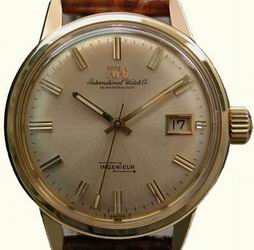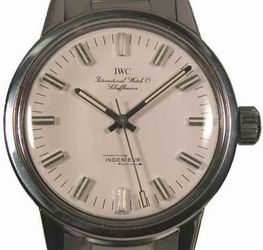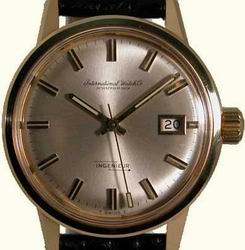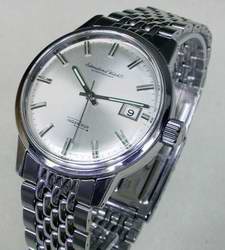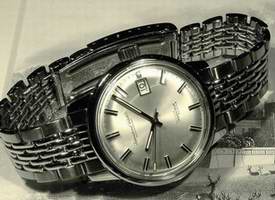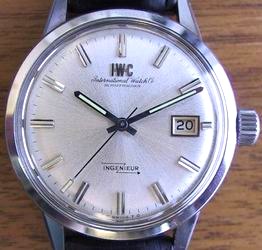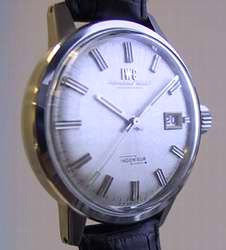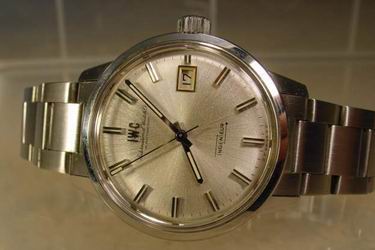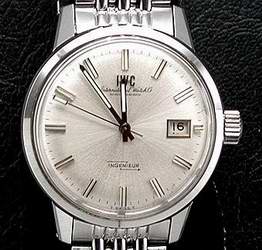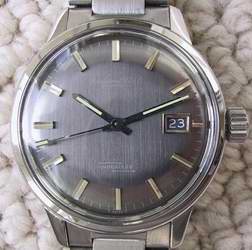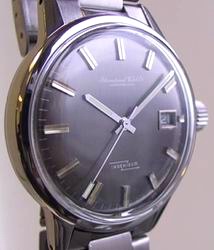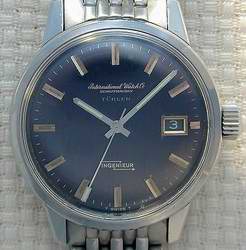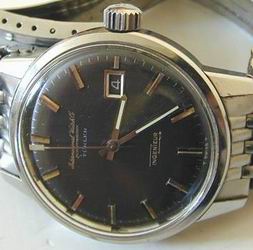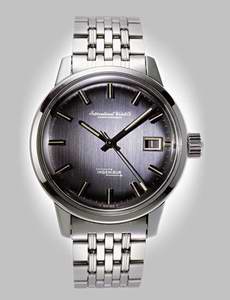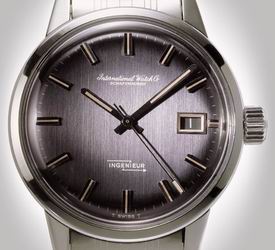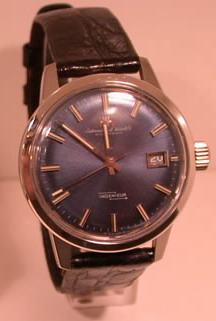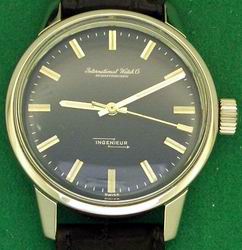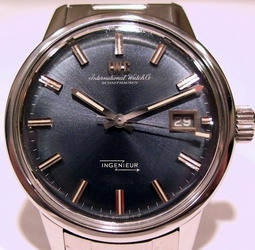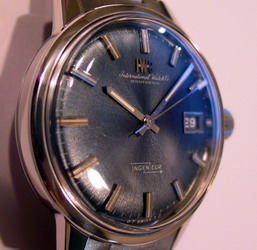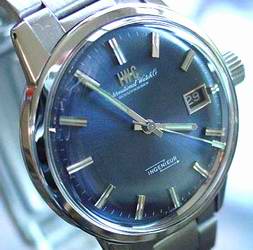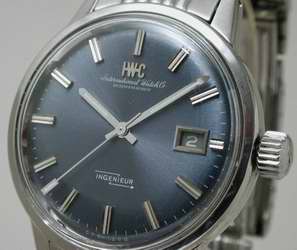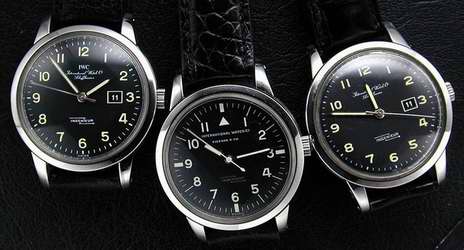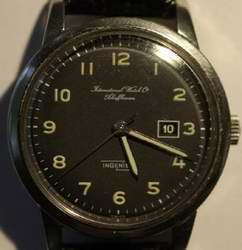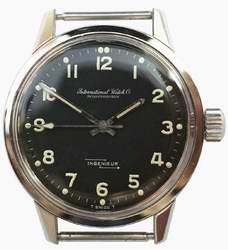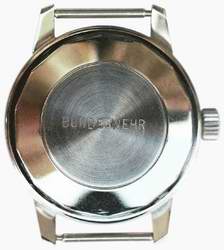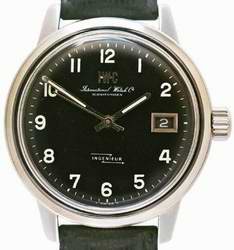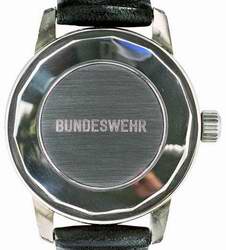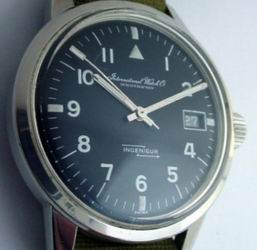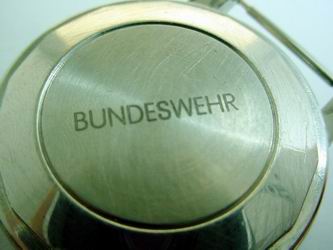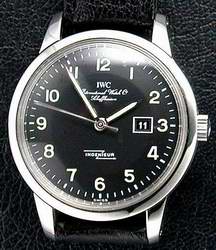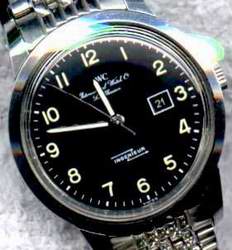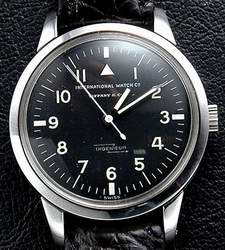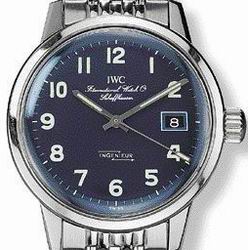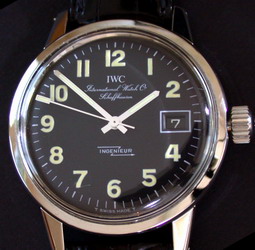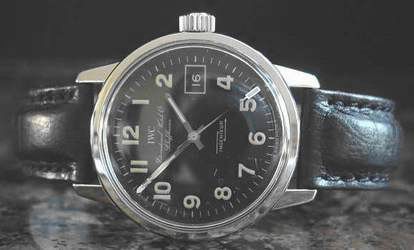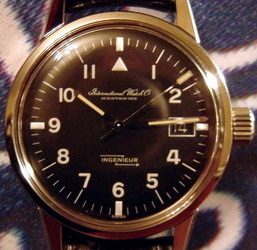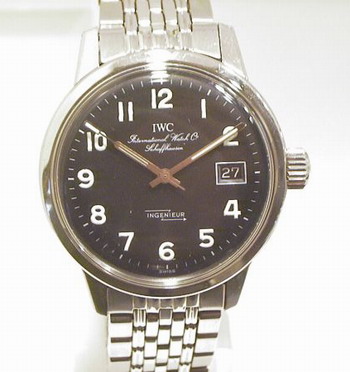| 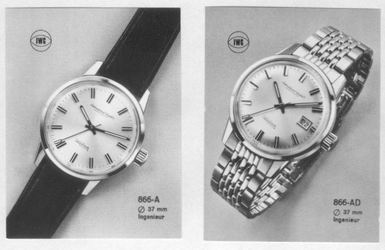
Cal. 854 and 8541 (ref. 866 A and 866 AD)
Ingenieurs from 1968.
See full page here.
|
|
The c.854/8541 was introduced by IWC around 1964, but
for whatever reasons was not incorporated into the Ingenieur
until 1967. Indeed, for 1966 when most other automatics
had already been equipped with the new c.854x, the IWC
catalog still offered the old Ingenieur model with the
c.853x movement. And a Japanese
flyer of the same period shows the old ref.
666 A next to the new Yacht Club and Aquatimer models
which both were launched at the turn of 1966/67 (this
is thus the last appearance of the ref. 666). The July
issue of the German journal "Die Uhr", however
indicates that the new Ingenier with the c.854x had been
announced at least by mid-1967, and the new line featured
prominently at the Basel fair of 1968, as can been seen
in this
1968 issue of JSHB ("Journale Suisse d’Horlogerie
et Bijouterie") covering the news from the fair.
|
| The new movement was slightly slimmer, the date indication
was moved closer towards the edge, and it featured a precision
adjustment with an adjustable drop on balance and weights
on the balance arms. To take advantage of its slimness,
a new case had to be created.
Because the reference numbering system at this
time was based on case types, the basic reference changed
from 666 to 866. When IWC changed their reference
numbering system, the 866 A and 866 AD changed, respectively,
to the ref. 1808 (with date) and the ref. 1908 (no date).
With the advent of the new calibre, IWC evidently decided
to give the looks of the Ingenieur a face-lift as well,
giving all dials of the model a uniform look with distinctive
twin hour markers, baton-shaped hands, and an eye-catching
paddle-neck second hand. A larger crown was added as well. Apparently the mixed case
style (14kt with stainless steel caseback) was no longer
produced, and the only known gold version was in 18kt
yellow gold. The dials, while fewer in
variety, were now given extra special attention, with
many having a sunburst pattern or other special finish. During this time period silver
dials were the main offering, but gray/anthracite and
an exquisite midnight blue were also available on stainless
steel models, while silver and gold/champagne dials (see
1974 catalog below) were also available for the 18kt variations. White and black dials may
also have been produced but the authors have found no
reference to such dials in the catalogs or other reference
material. The status of the Ingenieur as a
top-end product was furthermore underlined by use of hour
markers made out of white gold (or yellow for the 18 kt.
models) and the possible use of white gold powder on silver
dials. Some examples thus bear the APRIOR-mark (see
below) conferred by the "Association pour
la Promotion Industrielle de l'Or" to dials made
of solid gold or at least equipped with solid gold markers.
Notably, a dial lacing the APRIOR-mark does not mean the
markers are not gold. The Aprior was mainly active around
1970 with many ads in watch journals, but its cachet is
used by some manufactures to this day. For the purpose
of the APRIOR see
this article and this
one.
| Sometime in
the late-1960s or early-1970s, an applied "IWC"
logo was introduced on the dial above the script
"International Watch Company." It is not certain whether
this logo was used with much regularity and this
is the source of some confusion. The 1972 and 1974 catalogs
show the Ingenieur without the applied "IWC" logo,
although it appears on other IWC models in those
catalogs, appears on this
IWC dial catalog (circa 1972), a 1972 brochure
(at right), and certainly
appeared on many Ingenieurs during this timeframe. |
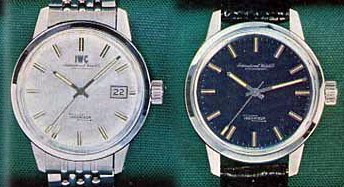
A ref.
866AD silver dial and 866A blue
dial from
a 1972 Japanese brochure |
Also, shortly before 1970, IWC introduced the 8541B movement
which featured some slight improvements. Although most 8541B movements
"hack" and most 8541 movements do not, this is not the
distinguishing characteristic between the two. Rather, the key difference
is the use of a "Grenier" type collet on the "B" model. Oddly, IWC used both of these
movements in the Ingenieur for a period of many years
and designated both movements as "caliber 8541" in its
archives.
|
|
The ref. 866 Ingenieur was produced in less numbers than
its predecessor. Especially scarce are the non-date version
despite that it was featured in the 1968 catalog (top
of page) and the 1972
dial catalog. One of the reason for the limited success
of the new model may have been that the Yacht Club proved
to be far more popular. The Yacht Club (also containing
the c.854x) was introduced in 1967 and was more fashionable
(for its time). As a result, the Ingenieur lost its position
as IWC's flagship model and its popularity began to wane,
at least in the main markets of central Europe. The catalogs
of the period tell the same story, and by 1975 the Ingenieur
was conspicously absent from a selection of the more popular
IWC models.
|
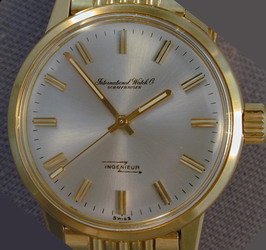
Rare
866A (non-date) with 18kt case.
|
|
|
|
The 1972 catalog (right) still gives the Ingenieur
a prominent role, although much more space is devoted
to the Yacht Club.
The only Ingenieur pictured is a stainless steel
model with a silver dial on a steel bracelet, yet the
price list makes clear that there is also a steel model
with a blue sunray dial (called midnight blue in the catalog)
and 18kt gold models with silver or gold dials. The stainless
steel model was available on a crocodile strap or bracelet
while the 18kt gold models were only available on the
strap. The non-date version (ref. 1908, formerly 866 A)
is not mentioned at all, suggesting that this model may
have been discontinued.
|
|
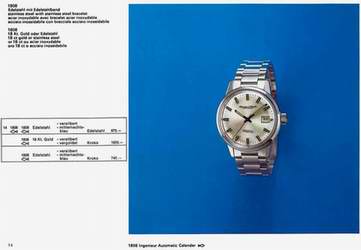
Ref. 1808 Ingenieur from IWC's 1972 catalog.
|
|
|
|
|
|
|
|
|
|
|
|
|
|
|
|
|
|
Above, an
18kt gold ref. 866 with a "champage" dial, as
shown in the below picture from IWC's 1974 catalog.
|
Above, a rare
non-date ref. 866 with an uncataloged white-dial but
with printing similar to this
model (described later in this section) with
"Schaffhausen" in script and "IWC" printed
on the dial, not applied. |
At right, page from the
1974 IWC catalog. The Ingenieur's presence in the was reduced
to three pages and in 1975 the Ingenieur is conspicuous
by its absence, although the dealer notebooks as late as
1977 listed the ref. 866/1808 Ingenieur alongside its replacement,
the ref. 1832.
English translation: Superantimagnetic and waterproof. For "occupation"
people, who work within the range of magnetic fields.
A double housing, whose internal layer consists of
soft iron protects the movement from magnetic field up to
1000 oersted (80,000 ampere per meter).
In high-grade steel, waterproof to 12 atu (120 meters
sea-deep), in gold to 6 atu (60 meters sea-deep).
Left. 18kt yellow gold or high-grade steel. Automatic,
calendar. Right.
high-grade steel with high-grade steel-band. Automatic,
Calendar.
|
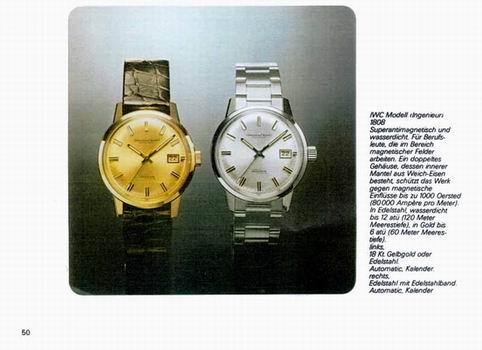
|
|





